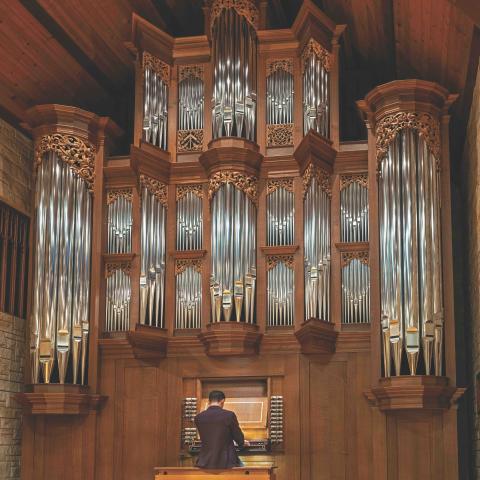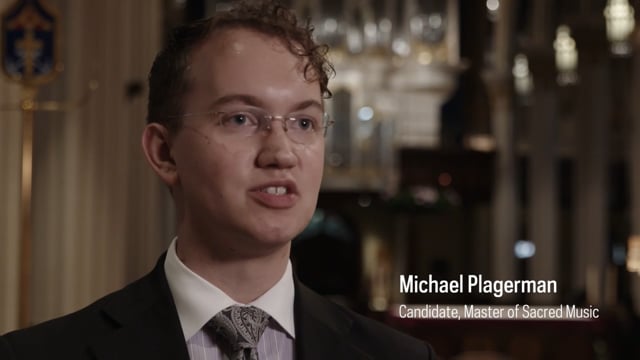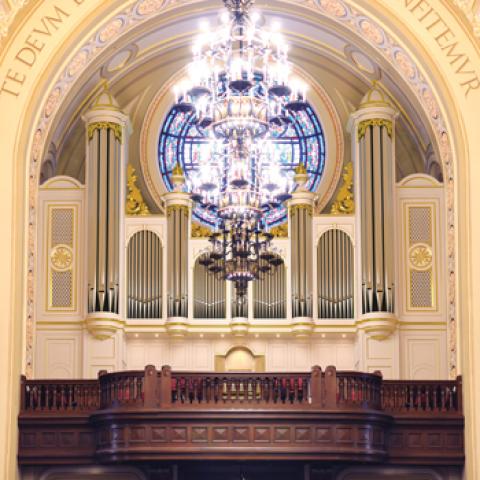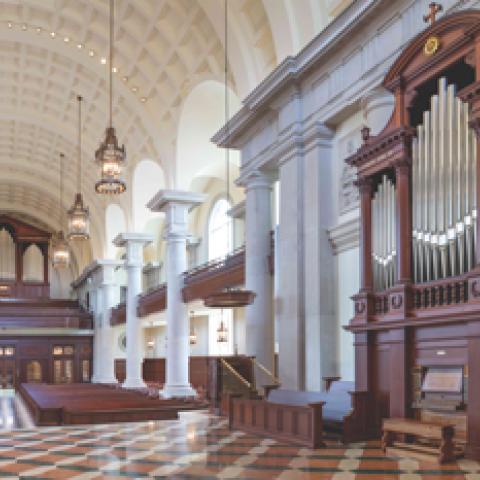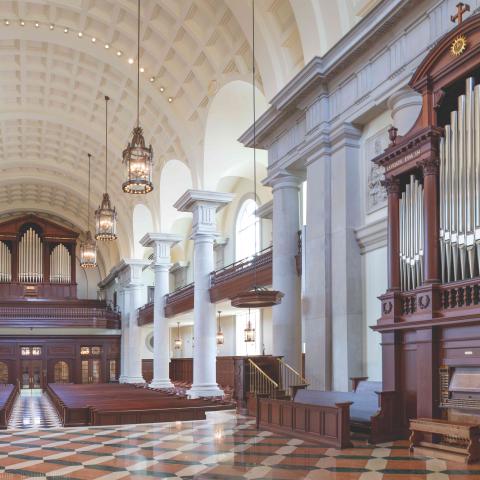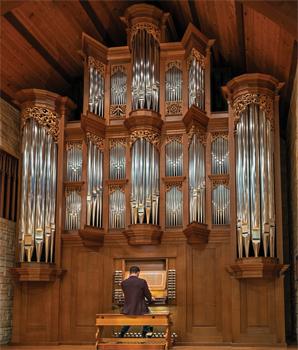
Paul Fritts and Company has built a new organ, Opus 43, for Saint Thomas Episcopal Church, Terrace Park, Ohio: two manuals and pedal, 35 stops, 43 ranks, 2,223 pipes.
www.stthomasepiscopal.org
www.bachensemble.org
The organ is featured on the cover of the July 2024 issue of The Diapason:
https://www.thediapason.com/content/paul-fritts-company-opus-43
The design is inspired by the so-called “Wide Hamburg Case.” It features three protruding, segmented towers and two pointed towers with large pipes and a series of major third arranged treble pipe flats between. This theme is duplicated with a few modifications for the upper, center section of the case behind which stands the swell box.
Some of the features of the organ include a free-standing case within the space with tightly grouped façade pipes and three-dimensional carvings, compact, customized chest layouts, relatively low wind pressure, pallets (valves) opened by means of a direct mechanical key action, a robust wind system and more. A three-sided swell box, string stops, an authentic French Symphonic Hautbois and a modern combination system (combined with the mechanical stop action) broaden the overall concept.
All the metal pipes are made from tin-lead sheets of various alloys, exclusively cast on a tightly packed and flat sand bed. The St. Thomas case is made of ammonia fumed and oiled, solid white oak. The carvings are also of white oak and were carved by Christiane Sandler.
For information:
http://www.frittsorgan.com/index.html
Other recent organ builder news:
Juget-Sinclair organ for Cathedral of St. Joseph, Sioux Falls

